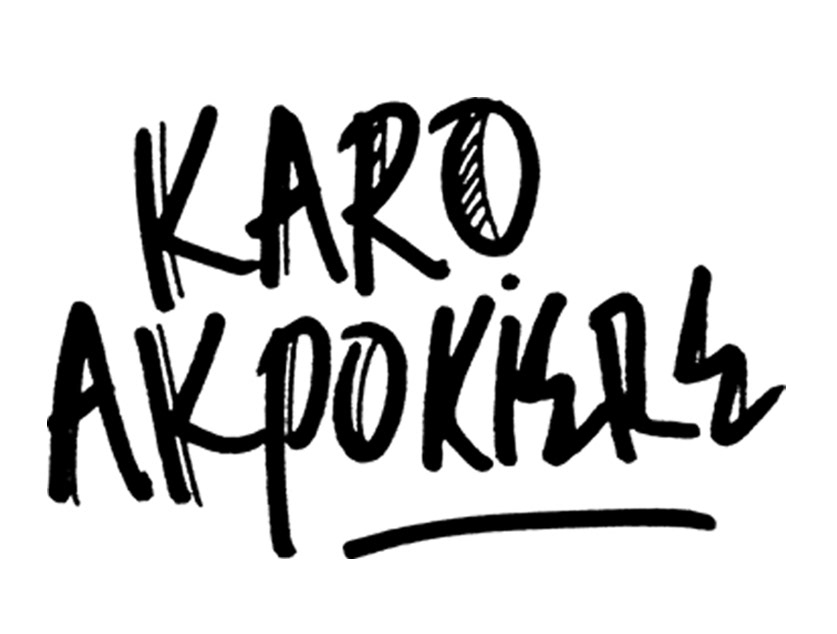The Past is a Path. 2020
The Past is a Path makes extensive use of archival documents to develop a fictional conversation that loosely highlights the events that led to Cameroon becoming a German colony and, the execution of Rudolf Duala Manga Bell. The conversation is inspired by the political, economic, and cultural disparities faced by people who have roots in countries that were colonized and their experiences.
The Past is a Path ist eine fiktive Unterhaltung, die ausgiebigen Gebrauch von Archivdokumenten macht, um die Ereignisse zu beleuchten, die dazu führten, dass Kamerun eine deutsche Kolonie und Rudolf Duala Manga Bells hingerichtet wurde. Inspiriert ist das Gespräch von den Erfahrungen und politischen, wirtschaftlichen und kulturellen Ungleichheiten, mit denen Menschen konfrontiert sind, die Wurzeln in ehemals kolonisierten Ländern haben.
Written and drawn by Karo Akpokiere.
Photos. Henning Rogge.
_____________________________________
A novel in black and white with colourful corners
Although possibly disorienting, the composition of the room works quite well. The stories of Rudolf Duala Manga Bell, Maria Mandessi Bell and Adolf Ngoso Din are told in the centre of the room by means of a graphic novel. Drawn and written by artist Karo Akpokiere, the novel functions as a red thread, a “path”, and depicts a fictional dialogue between a (presumably Black) German and a Cameroonian (see Fig. 1 and 4). Akin to oral history, the graphic novel slithers on four walls in the middle of the room. The narrators relate colonial conquest and exploitation in Cameroon with segregation in apartheid South Africa. They also question to what extent coming to terms with the Nazi past has eclipsed or helped working through the colonial era. Thanks to seemingly naïve questions, the dialogue addresses complexities, breaks taboos, and unravels contradictions, such as the paradox “warum suchst du nach Gerechtigkeit bei Leuten, die sich deiner Unterdrückung verschrieben haben?”. (“Why do you seek justice from people who are dedicated to your oppression?”)
Akpokiere’s narrative seeks to answer the question he himself posed at the beginning of the exhibition catalogue: why did the Germans want Rudolf Duala Manga Bell dead? Not only does the fictional dialogue deftly addresses well-known historical “facts”, it also conveys how Rudolf Duala Manga Bell might have felt during his lifetime, a side of the story that has been relatively forgotten. Although violence is part of the narrative, it is never carelessly reproduced. Only the red of the Prussian imperial flag stands as a metonymy for blood.
Roman in Schwarz-Weiß mit bunten Ecken
Die Komposition des ersten Raumes ist vielleicht etwas verwirrend, aber sie funktioniert sehr gut. Die Geschichten von Rudolf Duala Manga Bell, Maria Mandessi Bell und Adolf Ngoso Din werden in der Mitte mithilfe einer Graphic Novel erzählt. Der von dem Künstler Karo Akpokiere gezeichnete und geschriebene Roman fungiert als roter Faden, als „Weg“, und stellt einen fiktiven Dialog zwischen einer*m (vermutlich Schwarzen) Deutsche*n und einer*m Kameruner*in dar (Abb. 1 & 4). Die Graphic Novel schlängelt sich, ähnlich einer Oral History oder Überlieferung, über die vier Wände in der Mitte des Raumes. Die Erzähler*innen setzen die koloniale Eroberung und Ausbeutung in Kamerun mit der Apartheid in Südafrika in Beziehung. Sie fragen auch, inwieweit die Vergangenheitsbewältigung der nationalsozialistischen Epoche eine Anerkennung der Kolonialzeit verdrängt oder erleichtert hat. Dank scheinbar naiver Fragen spricht der Dialog Komplexitäten an, bricht Tabus und entwirrt Widersprüche, wie etwa das Paradoxon des Widerstands durch Petitionen: „Warum suchst du nach Gerechtigkeit bei Leuten, die sich deine Unterdrückung verschrieben haben?“
Akpokieres Erzählung versucht die Frage zu beantworten, die er selbst zu Beginn des Ausstellungskatalogs stellt: Warum wollten die Deutschen den Tod von Rudolf Duala Manga Bell? Bemerkenswert ist, dass der fiktive Dialog nicht nur die erinnerten historischen „Fakten“ thematisiert, sondern auch darauf eingeht, wie sich Rudolf Duala Manga Bell zu seinen Lebzeiten gefühlt haben könnte und damit Vergessenes anspricht. Obwohl auch Gewalt eine Rolle spielt, wird sie nie leichtfertig reproduziert. Nur das knallende Rot der preußischen Reichsflagge, einzige Farbe der Graphic Novel, steht als Metonymie für Blut.
A novel in black and white with colourful corners. Text. Marina Lauterbach, Yann LeGall.
